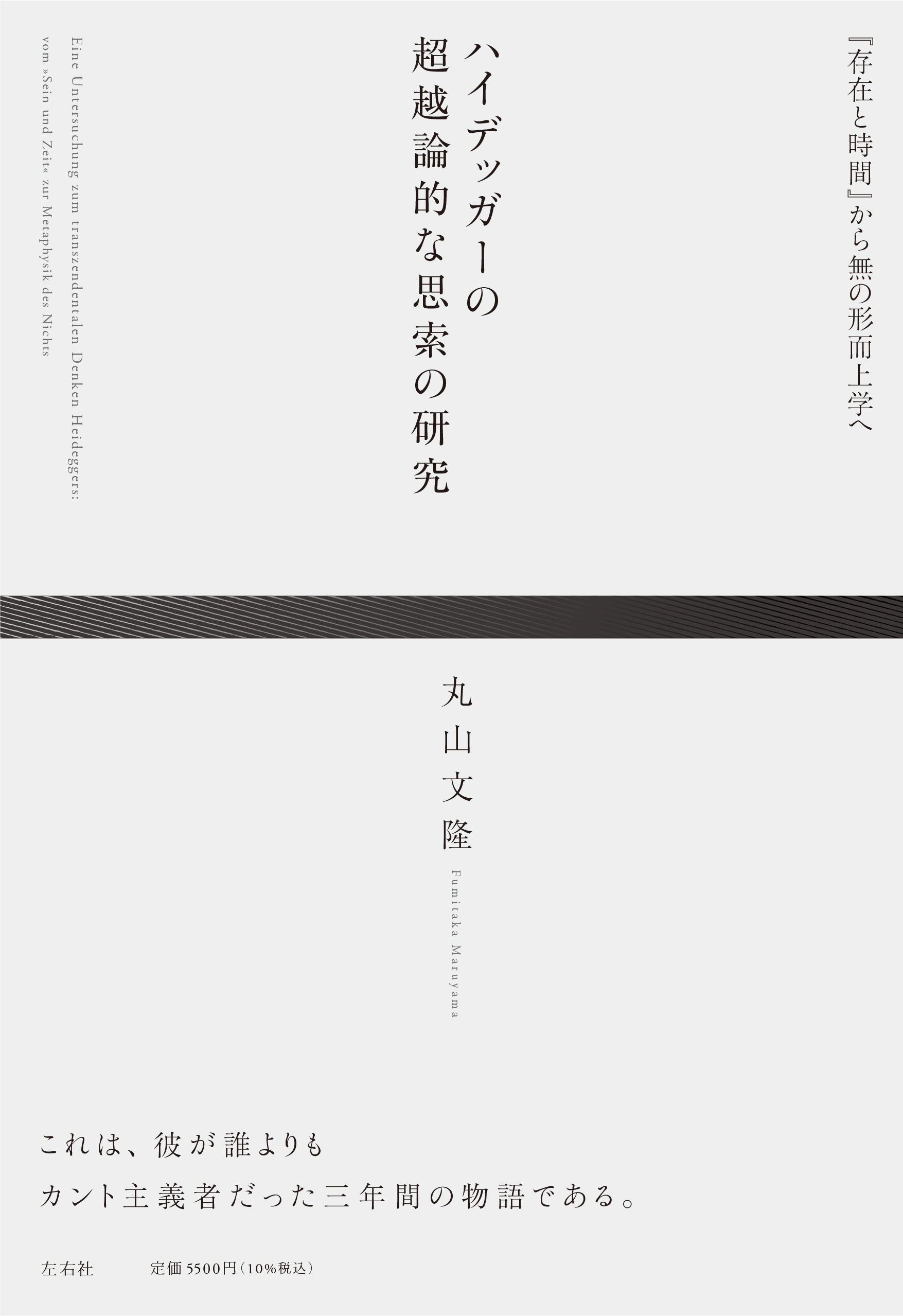
Title
Humanities in Flux Heidegger no Choetsuron-teki na Shisaku no Kenkyu (An Inquiry into Heidegger's Transcendental Thinking - From Being and Time to the metaphysics of nothingness)
Size
336 pages, 148x210mm, hardcover
Language
Japanese
Released
June 15, 2022
ISBN
978-4-86528-084-5
Published by
SAYUSHA
Book Info
See Book Availability at Library
Japanese Page
Being and Time, the seminal work of the German philosopher Martin Heidegger published in 1927 was only the first of what was meant to be a two-volume series. The biggest theme—namely, the “question of the meaning of being”—has never been adequately addressed. Records of lectures conducted immediately after the book’s publication indicate that the second book, which Heidegger had been planning to write, did not come together as hoped. Although Heidegger published three works in 1929, it appears that he had already abandoned publication of the second volume at that point.
The majority of past research has understood the circumstances described above as a failure in Heidegger’s setting up of the problem of transcendentalism. That is to say, although Being and Time (the first volume) strongly rejected traditional subjective philosophy and presented the new existential framework of being-in-the-world, Heidegger’s setup of the question of the meaning of being was a vestige of Immanuel Kant’s and Edmund Husserl’s transcendentalism; it was the inherent limitation of this problem setup that caused Heidegger to abandon completing the second book.
In contrast to previous research, An Inquiry into Heidegger's Transcendental Thinking argues the following three points: (1) Being and Time should not be perceived as internally inconsistent due to its inheritance of Kant’s and Husserl’s setup of transcendentalism but, rather, as a work that presents an organized and appealing thinking centered around the setting up of transcendentalism; (2) although Heidegger’s doubts regarding his setup of transcendentalism intensified rapidly immediately following the publication of Being and Time, his works published in 1929 do not represent a breakaway from transcendental thinking but, rather, should be understood as being consistent with the Heidegger’s setup of transcendentalism; and (3) while it is true that Heidegger later moved away from his setup of transcendentalism, that, in and of itself, is not clear evidence of the internal limitations of the problem setup. In other words, the progression of Heidegger’s thinking does not signify a fatal flaw in transcendental thinking in general. Heidegger’s transcendentalism remains sufficiently appealing today.
Through this investigation of Heidegger, I have learned what researching the history of philosophy entails. It does not simply require the researcher to elucidate why something developed the way it did (fact) but, rather, to determine whether something was really supposed to develop in the way that it did (intrinsic inevitability). Accordingly, I attempted to follow the conventional view in the history of philosophy that Heidegger’s setup of transcendentalism collapsed as his thinking evolved and expected to discover some internal limitation in the problem setup; however, I was not able to maintain the sense of inevitability of such limitations.
(Written by: MARUYAMA Fumitaka / November 25, 2022)
Related Info
The 3rd UTokyo Jiritsu Award for Early Career Academics (The University of Tokyo 2022)
https://www.u-tokyo.ac.jp/ja/research/systems-data/n03_kankojosei.html



